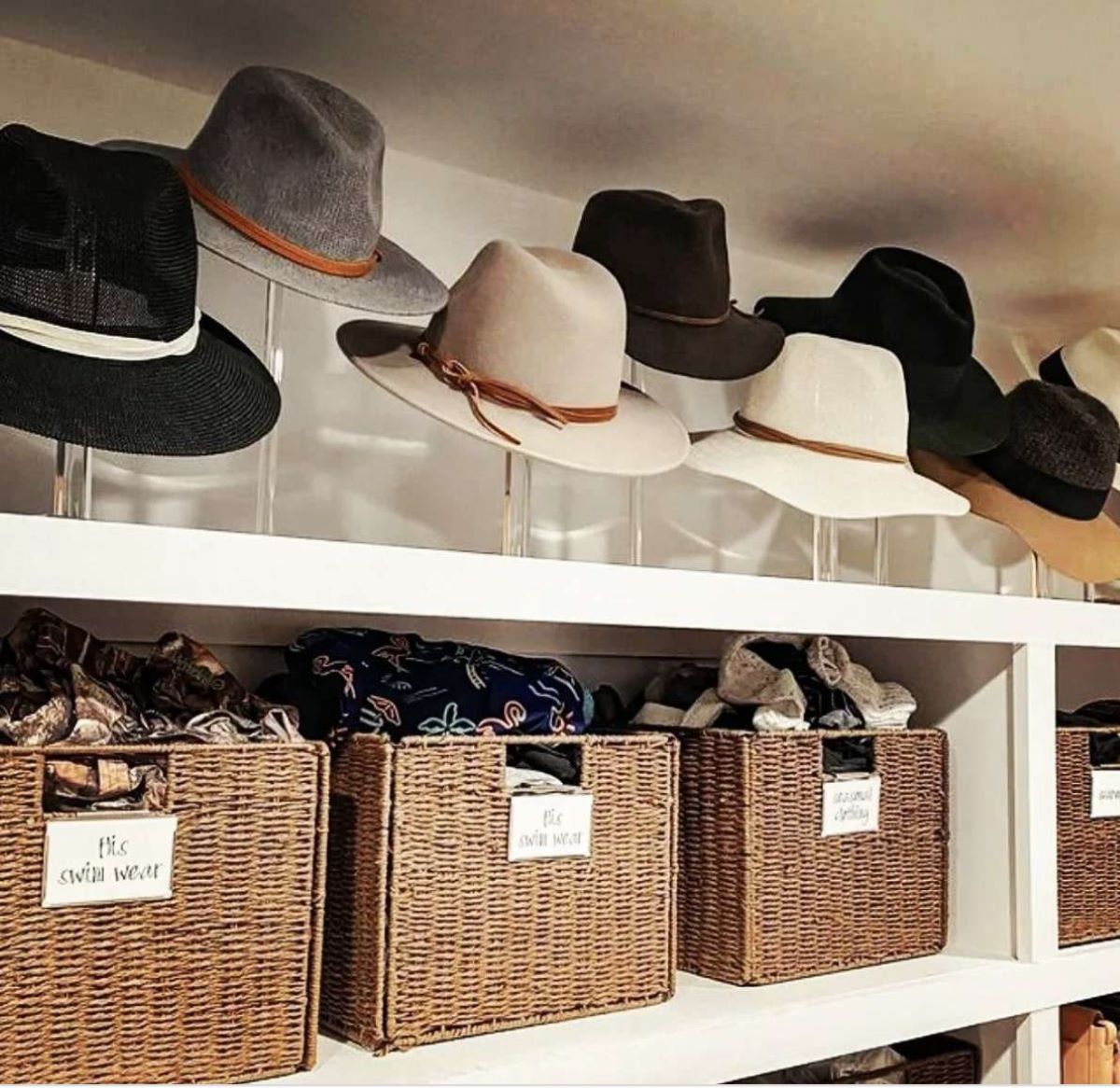

Articles
How To Store Hats
Modified: January 8, 2024
Discover the best way to store your hat collection with our informative articles. Protect your hats from damage and keep them organized.
(Many of the links in this article redirect to a specific reviewed product. Your purchase of these products through affiliate links helps to generate commission for Storables.com, at no extra cost. Learn more)
Introduction
When it comes to fashion accessories, hats are not only stylish but also functional. They can add a touch of elegance to an outfit or protect you from the sun during a hot summer day. If you own a collection of hats, it’s important to store them properly to maintain their shape and condition. Proper hat storage is essential to prevent damage to the brim, crown, and overall structure of the hat. In this article, we will explore the various types of hats and the different methods of storing them to ensure their longevity.
Whether you have a few favorite hats or an extensive collection, storing them in the right way will extend their lifespan and keep them looking their best. Different types of hats, such as fedoras, beanies, and sun hats, require specific storage methods to maintain their shape and protect their delicate materials. By investing a little time and effort into proper hat storage, you can ensure that your hats will remain in excellent condition for years to come.
There are various factors to consider when storing hats, including the materials they are made of, their size and shape, and the available storage space. Understanding the different types of hats and the specific requirements for each will help you choose the best storage options. Additionally, taking care of your hats by cleaning and maintaining them regularly will further prolong their lifespan.
In the following sections, we will explore the various types of hats, the materials needed for hat storage, and the different storage options available. We will discuss hat boxes, hat racks, hanging methods, and displaying options. Furthermore, we will provide tips on how to clean and maintain hats to keep them looking fresh and stylish. By the end of this article, you will have all the information you need to properly store and care for your hat collection.
Key Takeaways:
- Proper hat storage is essential to maintain the shape, condition, and longevity of hats, ensuring they remain stylish and well-preserved for years to come.
- Understanding the specific requirements of each hat type is crucial for choosing the best storage methods and materials, allowing hats to be well-protected and preserved.
Read more: How To Store A Hat
Why Proper Hat Storage is Important
Proper hat storage is necessary to preserve the quality, shape, and appearance of your hats. Here are a few reasons why it is essential to store your hats correctly:
- Protection from damage: Hats are susceptible to damage, especially if they are stored haphazardly or in unsuitable conditions. Storing hats in a proper manner can protect them from dust, moisture, sunlight, and accidental mishaps.
- Maintaining shape: Hats are designed with specific shapes that complement different styles and face shapes. Improper storage can cause hats to lose their shape and become misshapen or deformed. Proper storage methods allow hats to retain their original shape, ensuring that they fit comfortably and look stylish when worn.
- Preserving materials: Hats can be made from a variety of materials, such as straw, felt, wool, or fabric. Each material requires specific care to prevent damage and extend its lifespan. Proper storage helps to protect these materials from fading, discoloration, or deterioration caused by environmental factors.
- Organized and accessible: Storing your hats properly ensures that they are easily accessible and organized. This makes it convenient for you to choose the right hat for any occasion without having to search through a messy pile or risk damaging other hats in the process.
- Prolonging lifespan: By providing the right storage conditions, you can significantly extend the lifespan of your hats. With proper care and storage, your hats can remain in excellent condition for many years, allowing you to enjoy them season after season.
Whether you are an occasional hat wearer or a passionate hat collector, investing in proper hat storage is a wise decision. Not only does it protect your hats from damage, but it also allows you to showcase and enjoy your collection for years to come. Now that we understand why proper hat storage is important, let’s explore the different types of hats and the specific storage methods required for each.
Different Types of Hats
Hats come in a wide variety of styles, shapes, and materials, each designed for different purposes and occasions. Let’s explore some of the most popular types of hats:
- Fedora: The fedora is a classic hat style with a wide brim and a creased crown. It exudes sophistication and can be worn with both casual and formal outfits.
- Beanie: Beanies are knitted caps that are perfect for keeping your head warm during cold seasons. They come in various colors and designs, making them a trendy and practical accessory.
- Sun Hat: Sun hats are wide-brimmed hats designed to provide sun protection. They are popular for beach trips, outdoor events, and sunny vacations.
- Panama Hat: Panama hats are made from woven straw and are lightweight and breathable. They are perfect for summer wear and add a touch of elegance to any outfit.
- Beret: Berets are soft, round, flat-crowned hats made from wool or felt. They are often associated with French fashion and can add a chic and stylish touch to any ensemble.
- Baseball Cap: Baseball caps have a curved brim and a snug fit. They are a popular choice for casual and sporty looks and provide protection from the sun.
- Cowboy Hat: Cowboy hats are wide-brimmed hats with a high crown. They are typically made of felt or leather and are associated with western fashion and cowboy culture.
- Bucket Hat: Bucket hats have a downward sloping brim and a rounded crown. They are comfortable and versatile, and are often worn for outdoor activities or as a fashionable accessory.
These are just a few examples of the many types of hats available. Each hat has its own unique style and purpose, and it’s important to consider these factors when storing them to ensure their longevity. Now that we have a good understanding of the different types of hats, let’s dive into the materials needed for proper hat storage.
Materials Needed for Hat Storage
When it comes to hat storage, there are a few essential materials you’ll need to ensure proper care and preservation. Here are some of the materials you should have on hand:
- Hat boxes: Hat boxes are a must-have for storing hats. They provide a safe and secure environment, protecting hats from dust, sunlight, and potential damage. Look for hat boxes made of sturdy materials, such as cardboard or fabric, that provide adequate space for your hats and allow for proper ventilation.
- Acid-free tissue paper: Acid-free tissue paper is essential for stuffing and padding hats within the boxes. It helps to preserve the shape of the hat and prevents any potential creasing or bending. Avoid using regular tissue paper or newspaper, as the acids in them can damage the hat material over time.
- Hat forms or molds: Hat forms or molds are useful for maintaining the shape of your hats during storage. They come in various shapes and sizes and can be made of materials such as foam or plastic. Place the hat form inside the hat before storing it in the box to help it maintain its original shape.
- Dehumidifier or moisture-absorbing packs: Moisture can be detrimental to certain hat materials, such as straw or felt, as it can cause mold or mildew to develop. To prevent this, consider using a dehumidifier in the storage area or placing moisture-absorbing packs inside the hat boxes.
- Cloth or fabric covers: Fabric covers are useful for protecting hats from dust and sunlight when they are not being worn. You can use cloth covers specifically designed for hats or opt for breathable fabric materials like cotton or linen. These covers help to maintain the quality and cleanliness of the hats between uses.
- Cleaning supplies: Keeping your hats clean is an essential part of proper hat storage. Make sure to have the necessary cleaning supplies, such as a soft brush, mild detergent, and a lint roller. These tools will help you keep your hats looking fresh and free from any dirt or debris.
Having these materials on hand will ensure that you are equipped to store your hats properly. They will help you maintain the shape, condition, and appearance of your hats, ensuring their longevity and allowing you to enjoy them for years to come. Now that we know the necessary materials for hat storage, let’s explore the different options for storing hats.
Hat Storage Options
When it comes to storing hats, there are several options available, depending on your space and personal preferences. Here are some popular hat storage methods to consider:
- Hat boxes: Hat boxes are a classic and effective way to store hats. They provide a safe and secure environment, protecting hats from dust, sunlight, and potential damage. Hat boxes come in various sizes and materials, such as cardboard or fabric, and can be stacked easily to save space. Labeling each box with the type of hat inside can make it easier to find the hat you’re looking for.
- Hat racks: Hat racks are a practical option for those who prefer to display their hats while keeping them easily accessible. You can find hat racks in different designs, including wall-mounted or freestanding options. Hat racks often have hooks or pegs to hang hats, allowing them to maintain their shape and reducing the risk of damage.
- Hanging hats: Hanging hats can be a space-saving method, especially for hats that are more flexible and less structured, such as beanies or floppy hats. You can use hooks or pegs on a wall or a dedicated hat hanger to hang your hats vertically. Be sure to give enough space between each hat to prevent them from touching and potentially losing their shape.
- Displaying hats: If you have a collection of visually appealing hats that you’d like to showcase, consider investing in hat stands or mannequin heads. These can serve as both storage and display options while keeping your hats easily accessible. Displaying your hats can add a decorative element to your space and make it a conversation starter.
- Shelving units: Using shelves or bookcases with adjustable shelves can be a versatile solution for hat storage. You can place hats on the shelves, ensuring they are not stacked on top of each other to maintain their shape. This option allows you to showcase your hats while keeping them organized and accessible.
Choose the storage option that suits your needs, space, and the number of hats you have. Whether you opt for hat boxes, hat racks, hanging methods, or displaying options, remember to consider the specific requirements of each hat type to ensure proper storage. Properly organizing and storing your hats will not only keep them in great condition but also add a stylish touch to your living space.
Now that we have explored various hat storage options, it’s important to know how to clean and maintain your hats to keep them looking their best. Let’s dive into hat cleaning and maintenance tips in the next section.
Read more: How To Store Fitted Hats
Hat Boxes
Hat boxes are a classic and popular choice for storing hats. They provide a safe and protective environment for your hats, ensuring they are shielded from dust, sunlight, and potential damage. Hat boxes come in various sizes and materials, allowing you to select the best option for your specific hat collection. Here are some key features and benefits of using hat boxes for storage:
- Protection: Hat boxes offer excellent protection for your hats, keeping them safe from dirt, fading, and crushing. The sturdy construction of hat boxes shields your hats from external factors that can compromise their condition.
- Adequate space: Hat boxes are available in different sizes, providing ample space to store your hats without overcrowding them. This ensures that each hat has enough room to retain its shape and structure.
- Ventilation: Good hat boxes provide proper ventilation to prevent moisture buildup and allow airflow. Adequate ventilation is crucial for hats made from materials such as straw or felt, as it helps prevent mold or mildew from developing.
- Stackable: Hat boxes can be conveniently stacked on top of each other, allowing you to maximize storage space while keeping your hats organized. You can easily access the desired hat without disturbing the rest of the collection.
- Portable: Hat boxes often come with handles or straps, making them easy to carry and transport. This is particularly beneficial if you frequently change your hat collection based on seasons or occasions.
- Labeling: To keep your hats organized, you can label each hat box with the type or style of hat it contains. This makes it simpler to locate a specific hat without having to open multiple boxes or sift through your entire collection.
When using hat boxes, there are a few important considerations to keep in mind:
- Choose the right size: Ensure that the hat box is the appropriate size for your hat, allowing enough space for the hat to rest comfortably without being squished or bent.
- Protective padding: Use acid-free tissue paper or a soft cloth to pad the interior of the hat box. This helps to preserve the shape of the hat and provides an extra layer of protection during storage.
- Proper storage location: Find a suitable location to store your hat boxes, away from direct sunlight, extreme temperatures, and excessive humidity. A cool and dry area, such as a closet or storage room, is ideal.
- Regular inspection: Periodically inspect your hats stored in hat boxes to ensure they are in good condition. Check for any signs of damage, pests, or mold and address any issues promptly.
Using hat boxes for storage is an excellent way to keep your hats organized, protected, and easily accessible. Consider investing in high-quality hat boxes that match the size and material requirements of your hat collection. With the proper care and storage, your hats will remain in pristine condition, ready to be worn and enjoyed whenever you desire.
Now that we have explored hat boxes as a storage option, let’s move on to discussing hat racks and their benefits.
Store hats in a cool, dry place away from direct sunlight to prevent fading and damage. Use a hat rack or hooks to maintain their shape and avoid crushing.
Hat Racks
Hat racks are a practical and stylish storage solution for your hat collection. They allow you to display your hats while keeping them easily accessible and organized. Hat racks come in a variety of styles, sizes, and materials, allowing you to choose the one that best suits your space and personal taste. Here are some key features and benefits of using hat racks for storage:
- Organization: Hat racks help you keep your hats neatly organized and prevent them from getting tangled or mishandled. With designated hooks or pegs, each hat can have its own place and maintain its shape.
- Preservation of shape: Hanging hats on a rack supports their structure and prevents them from sagging, bending, or losing their shape. This is particularly important for hats with wide brims or delicate materials.
- Ease of access: Hat racks make it convenient to browse and choose the perfect hat for any occasion. You can easily see and reach your hats, eliminating the need to rummage through stacks or boxes.
- Showcase your collection: Hat racks provide an opportunity to showcase your hat collection as a decorative display. They can add a touch of style and personality to any room, making your hats a part of the overall aesthetic.
- Space-saving: Hat racks are often designed to maximize vertical space, making them suitable for small rooms or tight spaces. They can be wall-mounted or freestanding, utilizing unused wall or corner areas effectively.
- Customizability: Hat racks come in various designs and materials, allowing you to find one that matches your home decor and personal style. From modern and minimalist to rustic or vintage-inspired, there is a hat rack to suit any aesthetic preference.
- Multipurpose functionality: Some hat racks have additional storage options, such as shelves or hooks for other accessories like scarves or bags. This enhances the overall functionality of the rack and helps you keep all your accessories in one place.
When using hat racks, keep the following considerations in mind:
- Proper spacing: Ensure that there is enough space between each hat on the rack to prevent them from touching and potentially losing their shape. This is especially important for wide-brimmed hats or hats made from delicate materials.
- Sturdy construction: Choose a hat rack made from durable materials that can support the weight of your hats without bending or breaking. This ensures the longevity of the rack and the safety of your hats.
- Proper cleaning: Regularly dust off the hat rack and check for any signs of wear or damage. Clean the rack with a soft cloth or brush to keep it looking fresh and maintain the integrity of the hats.
With the versatility and functionality of hat racks, you can enjoy a well-organized hat collection while adding a decorative element to your space. Choose a hat rack that complements your interior design and provides the proper support for your hats. With proper care and storage, your hats will be easily accessible and ready to complete your outfits.
Now that we have explored hat racks as a storage option, let’s move on to discussing the option of hanging hats and its benefits.
Hanging Hats
Hanging hats is a practical and space-saving option for storing certain types of hats. While not all hats are suitable for hanging, hats with softer and more flexible materials, such as beanies or floppy hats, can be easily hung to maintain their shape and accessibility. Here are some key benefits and considerations for hanging hats:
- Preserve shape: Hanging hats allows them to retain their shape and structure. By keeping them suspended, you minimize the risk of the brim or crown becoming misshapen or flattened.
- Easy accessibility: Hanging hats on hooks or pegs provides easy access, allowing you to quickly choose the perfect hat to complete your outfit without digging through boxes or racks.
- Space-saving: Hanging hats takes advantage of vertical space, making it a great choice for those with limited storage space. You can hang hats on a wall-mounted rack, a coat hanger, or even repurpose a decorative hook or knob.
- Visual display: Hanging hats allows you to showcase your collection as a decorative element in your home. By selecting a designated area to display your favorite hats, you add a stylish touch to your living space.
- Care considerations: When hanging hats, it’s important to choose the right location and handle them with care. Avoid hanging hats in direct sunlight, as it can cause fading or discoloration. Additionally, be mindful of hats with delicate embellishments or materials that may be susceptible to damage when hung.
- Spacing: Ensure that there is enough space between each hung hat to prevent them from touching and potentially losing their shape. This is especially important for hats with wider brims.
When hanging hats, consider the following tips:
- Use appropriate hooks or pegs: Choose sturdy hooks or pegs that are suitable for the weight and size of your hats. Avoid using hooks with sharp edges that could potentially damage the hat material.
- Give hats breathing room: Allow enough space between each hat to maintain airflow and prevent them from touching. This will help them maintain their shape and prevent any transfer of dirt or sweat.
- Keep the area clean: Dust the hooks or pegs regularly to prevent any debris from accumulating and potentially transferring onto your hats.
While not all hats are ideal for hanging, those with flexible materials can be easily stored this way. Hanging hats provides a convenient and visually appealing storage solution, allowing your hats to stay beautifully organized and ready to wear. Ensure that you handle your hats with care and choose a suitable location to protect them from potential damage.
Now that we have explored the option of hanging hats, let’s move on to discussing how to display hats in a stylish and creative way.
Displaying Hats
Displaying hats is not only a practical storage solution but also a stylish way to showcase your collection. Whether you have a few statement hats or a large assortment, incorporating them into your home decor adds a unique touch and gives your space a personalized and fashionable look. Here are some creative ways to display your hats:
- Wall-mounted hooks: Install decorative hooks on a wall to hang your hats as an eye-catching display. Arrange them in an organized pattern or playfully mix and match hat styles for an eclectic look.
- DIY hat rack: Create a DIY hat rack using your imagination and some basic materials. Use reclaimed wood, pipes, or even antlers to fashion a custom hat display that reflects your personal style
- Affix hats to a pegboard: Attach a pegboard to a wall and hang your hats by inserting hooks or pegs into the holes. This allows you to easily move and rearrange the hats to suit your changing preferences.
- Hat tree: Invest in a hat tree, also known as a coat tree, which features multiple hooks or branches to hang your hats. Not only does it provide a dedicated space for your hats, but it can also double as a decorative accessory in your entranceway or bedroom.
- Mannequin heads: Use mannequin heads to display your hats in a visually appealing way. Choose heads that match the style and vibe of your hats and arrange them on shelves or a dedicated display area.
- Shelves and cubbies: Arrange hats on shelves or within cubbies, giving each hat its own designated space. This allows for easy access and showcases your collection in an organized and stylish manner.
- Mounted hat frames: Place individual hats in wall-mounted frames or shadow boxes. This not only protects the hats from dust but also turns them into unique pieces of art.
When displaying hats, consider the following tips:
- Group hats by style: Arrange your hats by style, such as fedoras, wide-brimmed hats, or beanies, to create a cohesive and visually appealing display.
- Consider color coordination: If you have a variety of hats in different colors, coordinate them to create a cohesive and aesthetically pleasing display.
- Rotate your collection: Switch out and rotate the hats on display periodically to keep your display fresh and prevent any potential damage from prolonged exposure to light or dust.
- Protect from sunlight: If displaying hats near windows or areas with direct sunlight, consider using UV-protective window film or curtains to prevent the hats from fading or discoloration.
Displaying your hats not only adds a stylish element to your space but also allows you to showcase your personal style and creativity. By incorporating your hat collection into your home decor, you create a visually pleasing and unique atmosphere. Remember to consider the specific needs of each hat type and the space available when choosing your display method.
Now that we have explored different options for displaying your hats, let’s move on to discussing the importance of cleaning and maintaining your hats.
Read more: How To Store Hats And Gloves
Cleaning and Maintaining Hats
Cleaning and maintaining your hats is essential to keep them looking fresh, stylish, and in excellent condition. Different hat materials, such as straw, felt, wool, or fabric, require specific care to prolong their lifespan. Here are some tips on how to clean and maintain your hats:
- Read the care instructions: Before cleaning your hat, always check the manufacturer’s care instructions. They will provide specific guidelines on how to clean and care for your particular hat material.
- Spot cleaning: For minor stains or dirt, gently spot clean your hat using a soft cloth or sponge dipped in a solution of mild detergent and water. Dab the affected area gently without rubbing to avoid damaging the material. Be sure to test the cleaning solution on a small, inconspicuous area first to ensure it doesn’t cause any discoloration or damage.
- Dry cleaning: If your hat requires more extensive cleaning or is made of delicate materials, consider taking it to a professional dry cleaner who specializes in hat cleaning. They have the expertise and equipment to clean your hat safely.
- Brushing: Regularly brush your hats to remove dust, lint, and debris. Use a soft-bristle brush or a lint roller, depending on the material of your hat. Always brush in the direction of the fibers to avoid damaging the material.
- Handling with clean hands: When handling your hats, make sure your hands are clean and free from any oils or dirt. This helps prevent transferring any debris onto the hat and keeps it looking fresh.
- Storing in proper conditions: Store your hats in a cool and dry place to prevent any moisture-related issues, such as mold or mildew. Avoid exposing them to direct sunlight for prolonged periods, as it can cause fading or discoloration.
- Using hat forms or molds: When not wearing your hats, place them on hat forms or molds to help maintain their shape. This is particularly important for hats made from materials like straw or felt, which are more prone to losing their form over time.
- Avoiding excessive handling: Limit the amount of handling and manipulation of your hats to prevent unnecessary wear and tear. Avoid touching or adjusting your hat with dirty or oily hands to keep it clean and free from stains.
- Regular inspection: Periodically inspect your hats for any signs of damage, such as loose threads, worn-out bands, or broken brim edges. Promptly address any issues to prevent further damage and maintain the hat’s quality.
Remember that each hat has specific care requirements, so it’s important to familiarize yourself with the care instructions for your hats. By following these cleaning and maintenance tips, you can keep your hats looking their best, prolong their lifespan, and continue to enjoy them for years to come.
Now that we have covered cleaning and maintaining your hats, let’s summarize what we have learned so far.
Conclusion
Proper hat storage is crucial for maintaining the shape, condition, and longevity of your hats. By following the right storage and maintenance techniques, you can protect your hat collection and keep it looking stylish and fresh for years to come.
In this article, we explored the importance of proper hat storage and the various types of hats, ranging from fedoras and beanies to sun hats and cowboy hats. Understanding the specific requirements of each hat type helps us choose the best storage methods and materials.
We also discussed essential materials needed for hat storage, including hat boxes, acid-free tissue paper, hat forms or molds, dehumidifiers or moisture-absorbing packs, cloth or fabric covers, and cleaning supplies. These materials ensure that our hats are well-protected and preserved.
From hat boxes and hat racks to hanging methods and creative displays, we explored different storage options suitable for any space and personal preference. Hat boxes offer excellent protection and organization, while hat racks provide easy accessibility and a stylish display. Hanging hats is a space-saving option, and displaying hats adds a decorative element to your home decor.
Cleaning and maintaining our hats is equally important. We discussed spot cleaning, dry cleaning, brushing, and handling hats with care. By following these cleaning and maintenance tips, we can keep our hats in pristine condition and extend their lifespan.
In conclusion, proper hat storage, cleaning, and maintenance are essential for preserving the quality, shape, and appearance of our hats. By investing a little time and effort into these practices, we can ensure that our hat collection remains stylish, well-organized, and ready to be worn for any occasion.
So, whether you have a few favorite hats or a vast collection to display, make sure to prioritize their storage, cleaning, and maintenance. With the right care, your hats will continue to be a fashion statement and a personal reflection of your style for years to come.
Frequently Asked Questions about How To Store Hats
Was this page helpful?
At Storables.com, we guarantee accurate and reliable information. Our content, validated by Expert Board Contributors, is crafted following stringent Editorial Policies. We're committed to providing you with well-researched, expert-backed insights for all your informational needs.
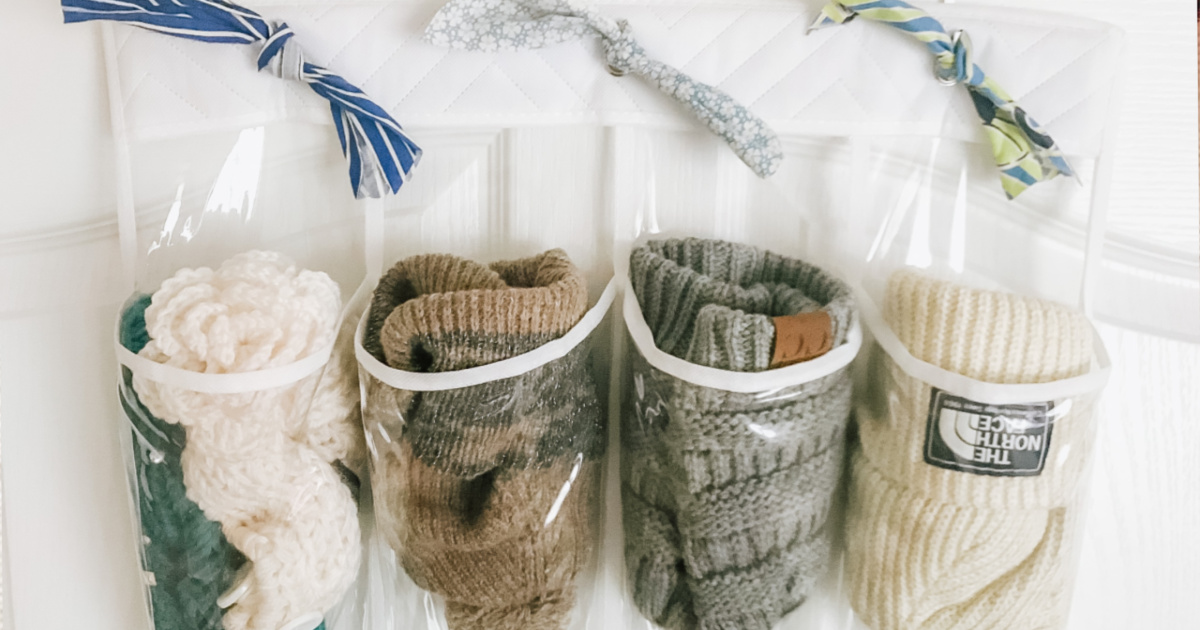
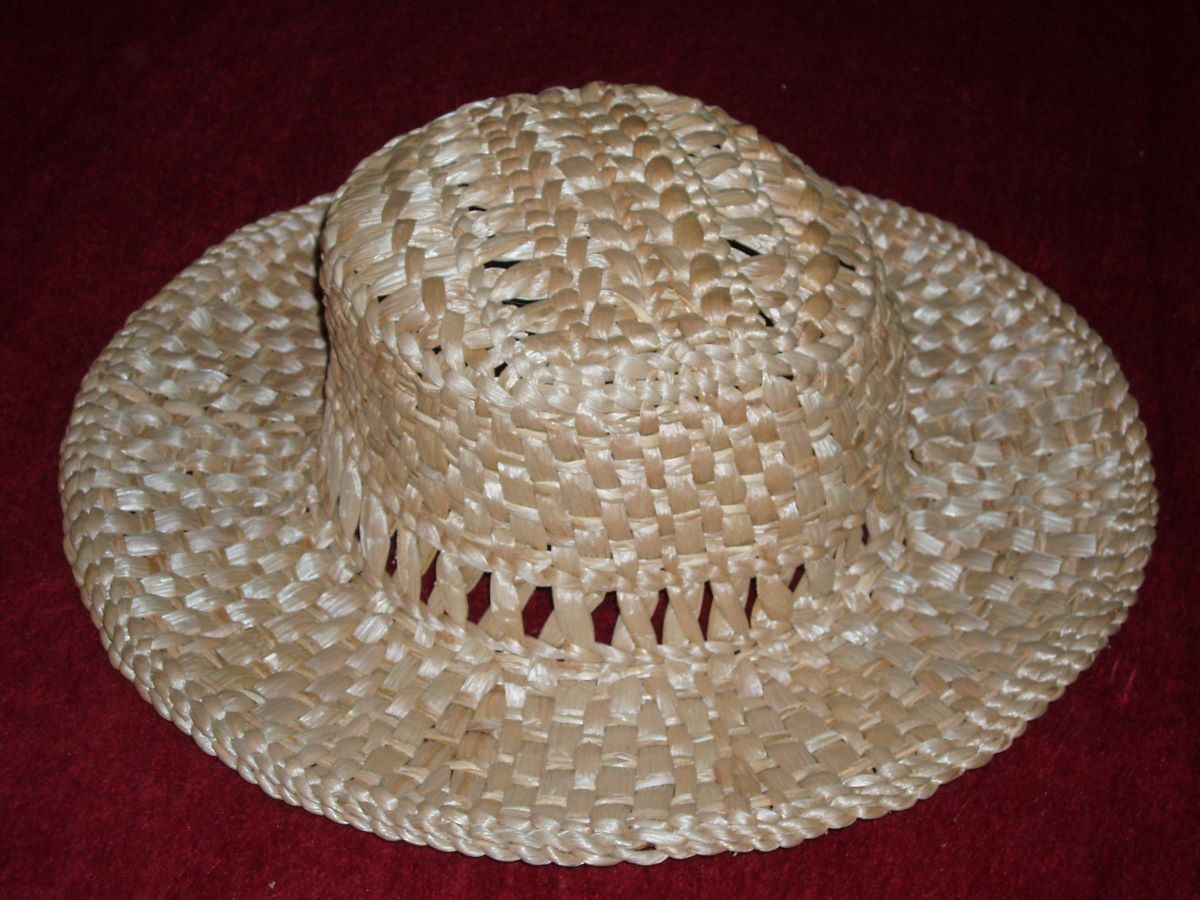

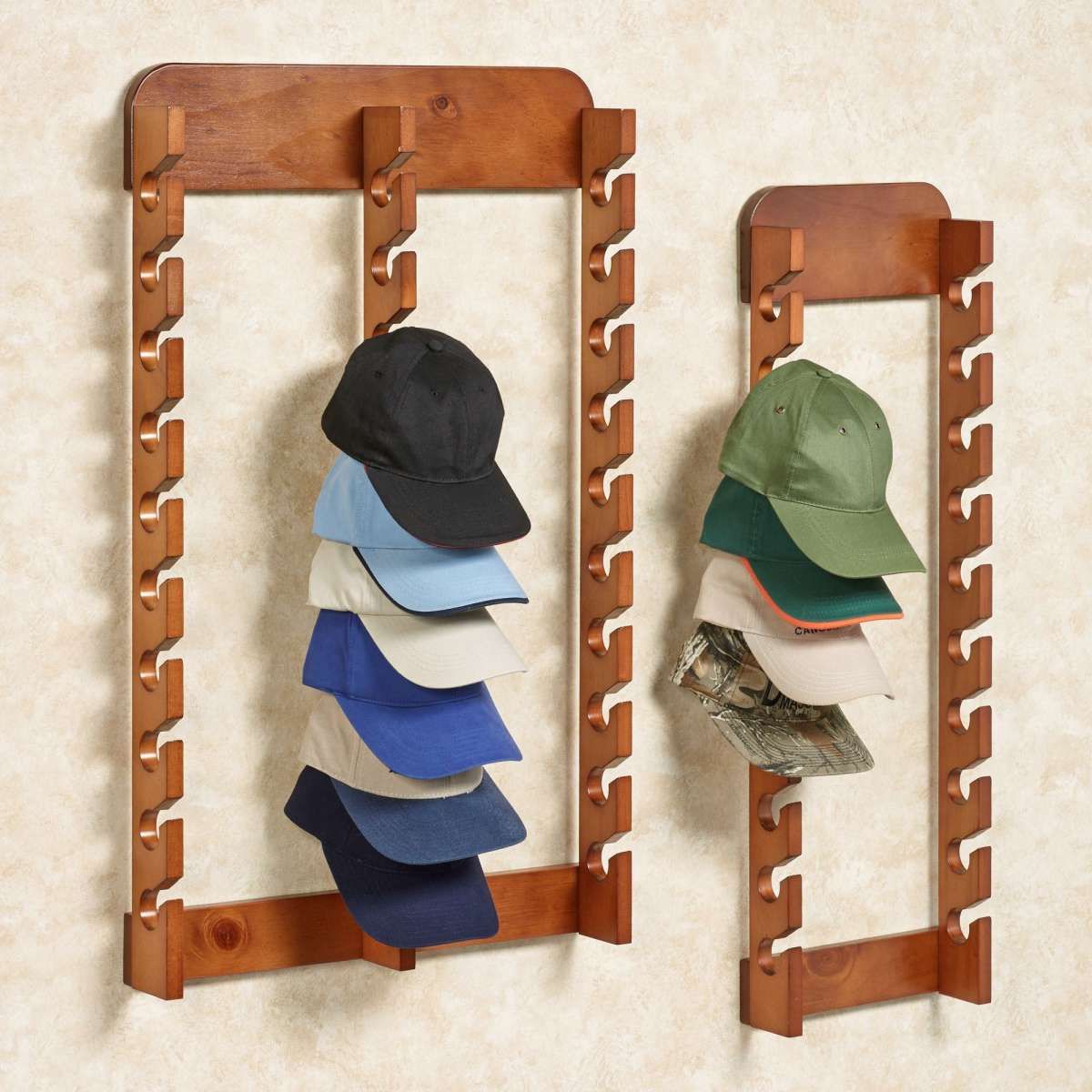

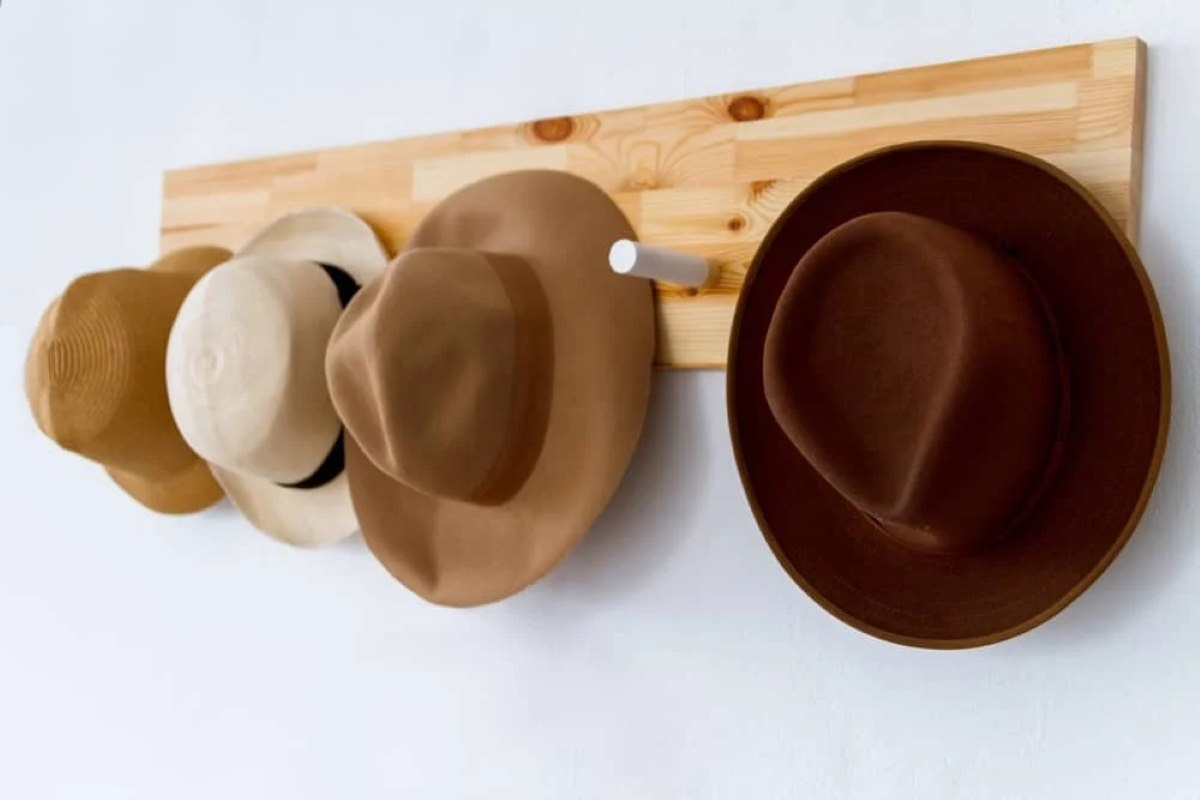



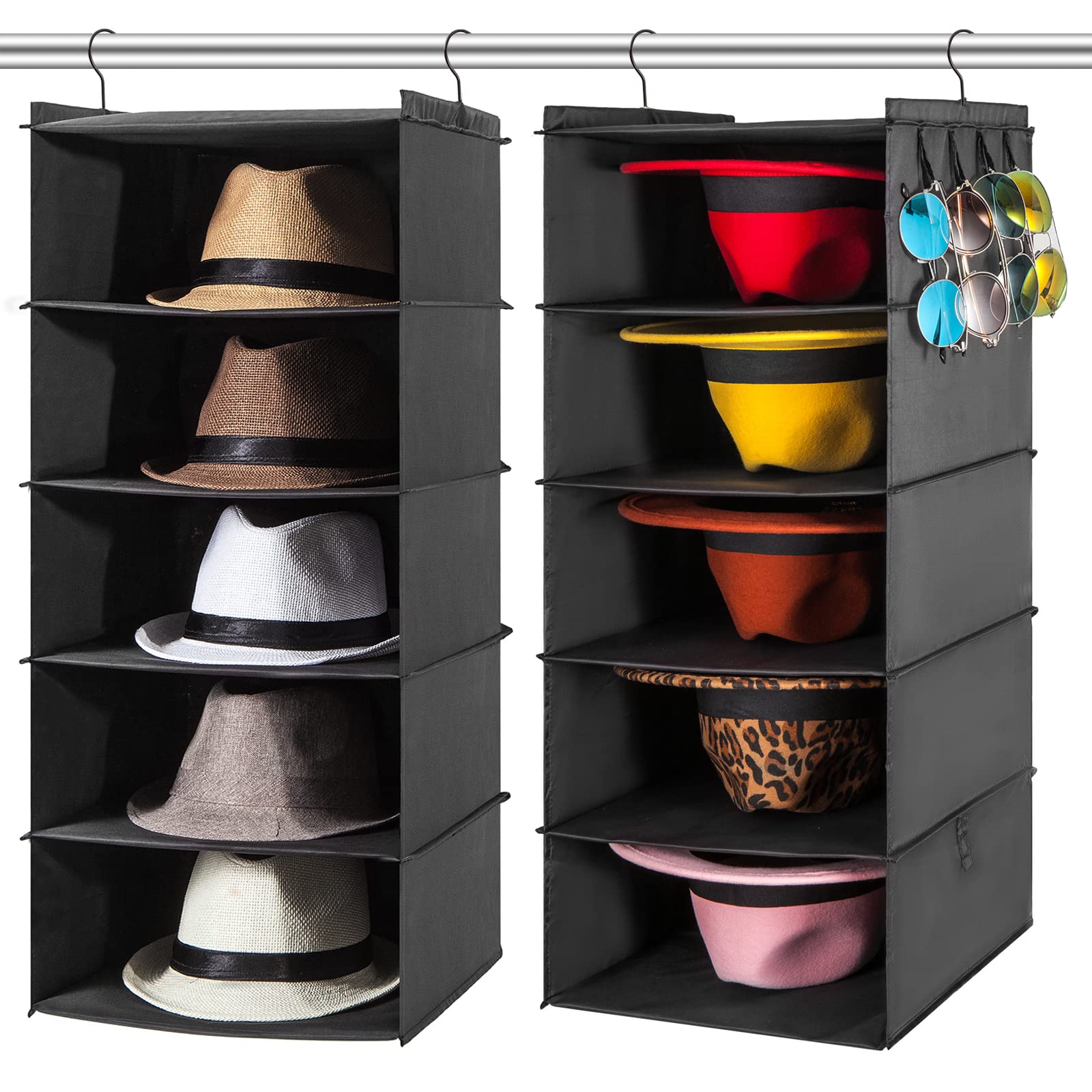
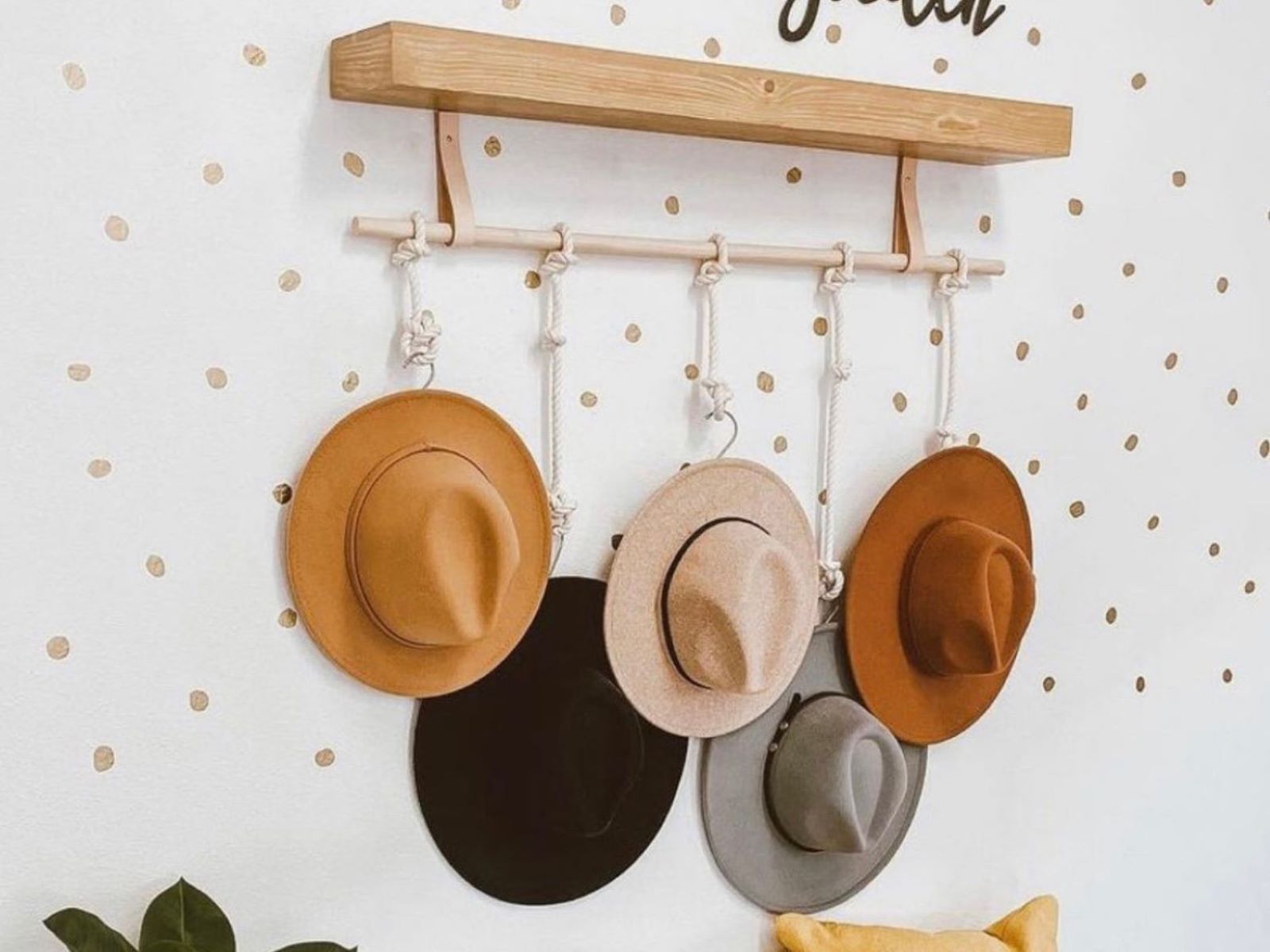
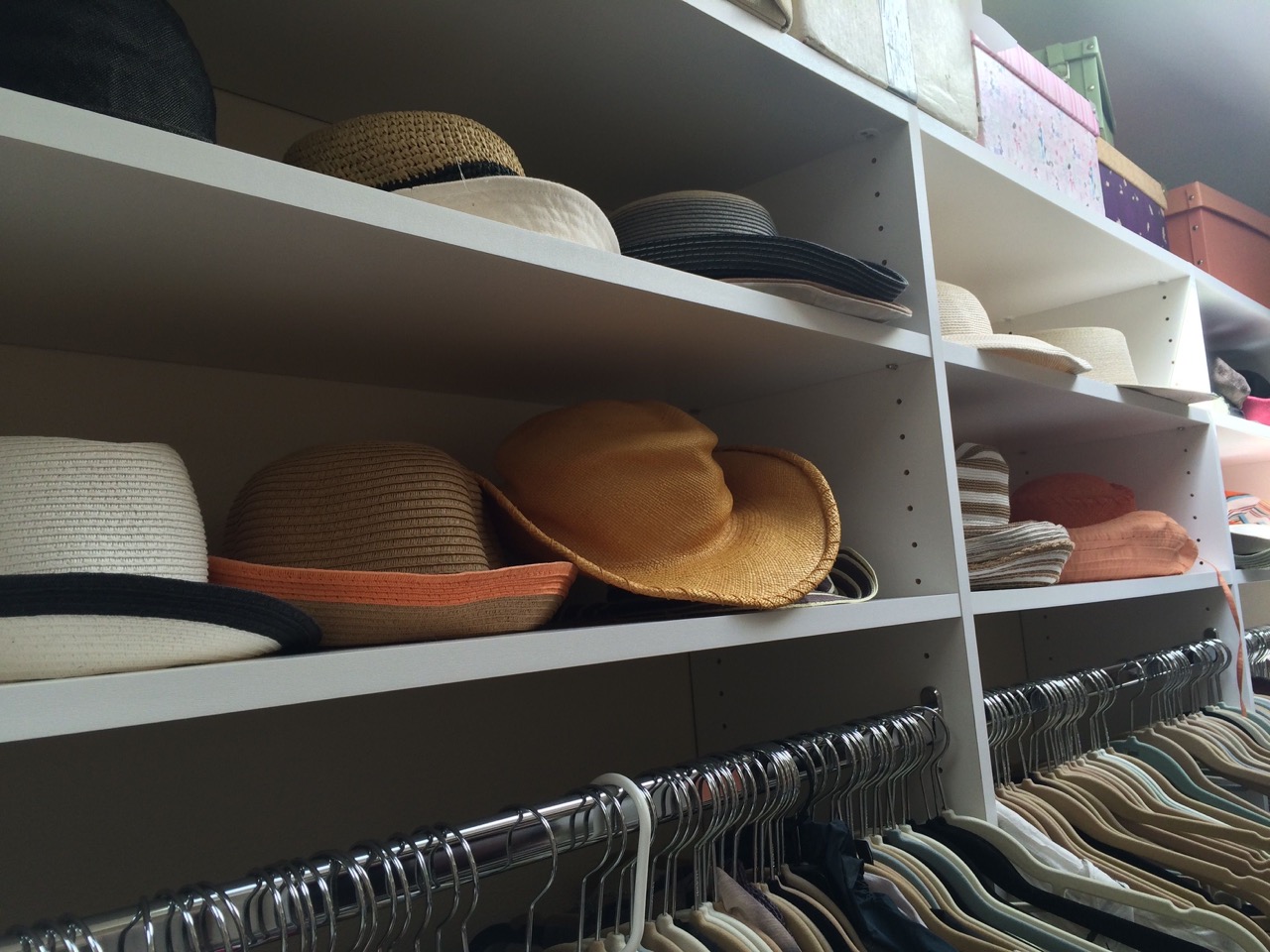


0 thoughts on “How To Store Hats”